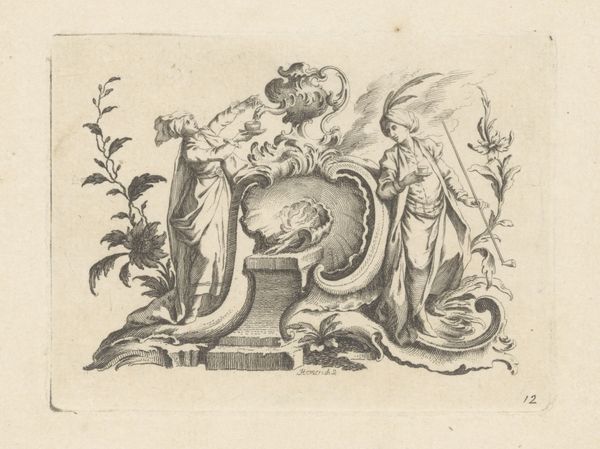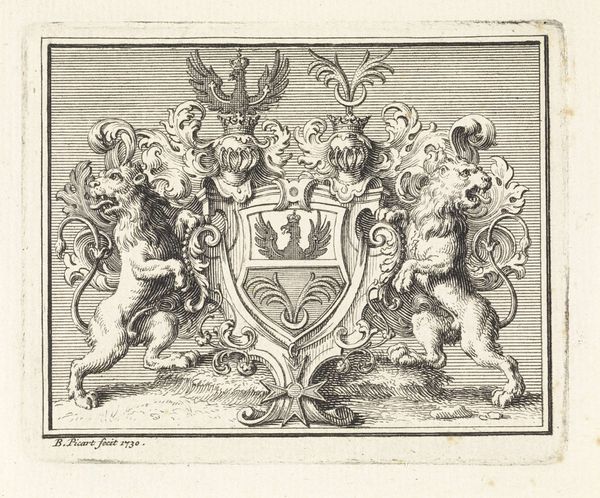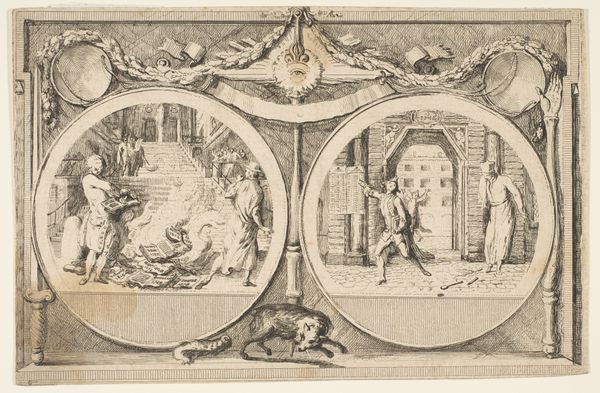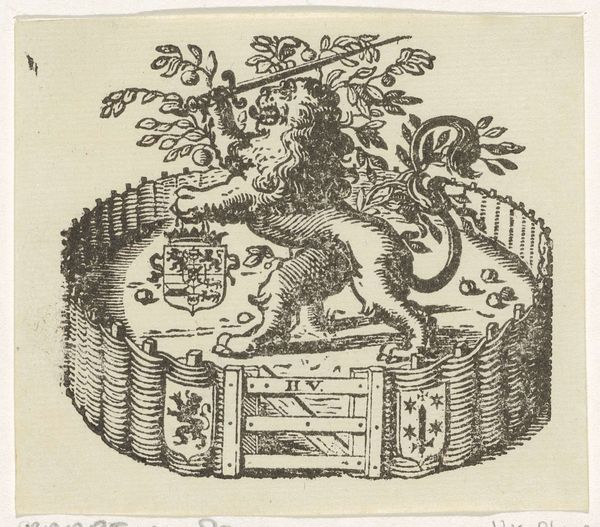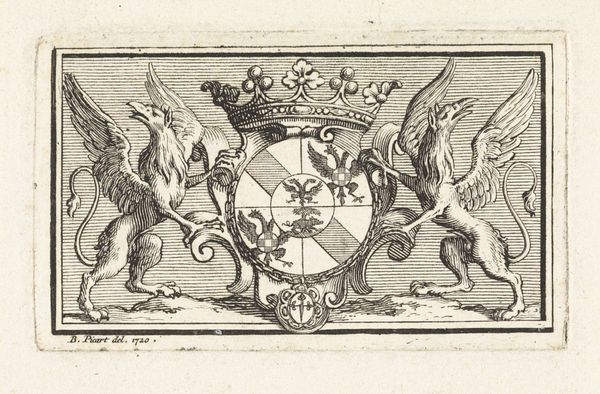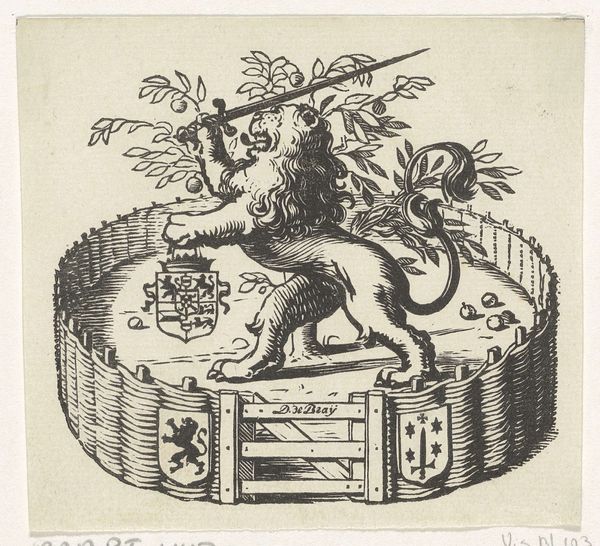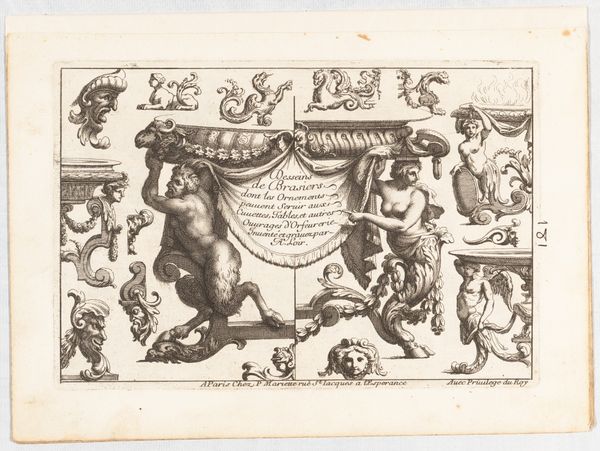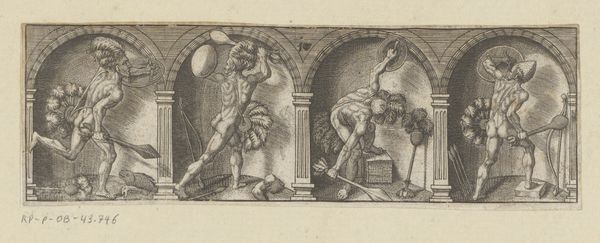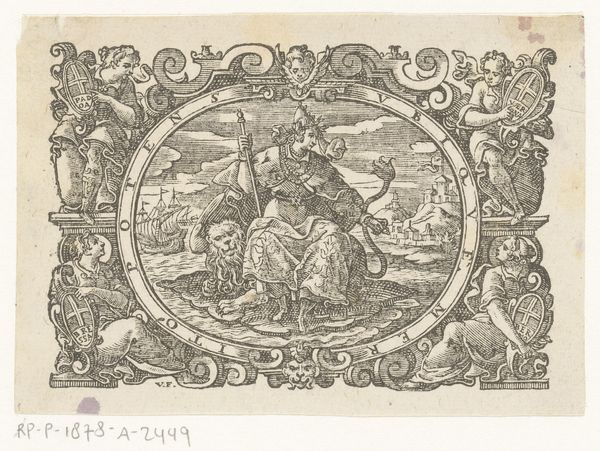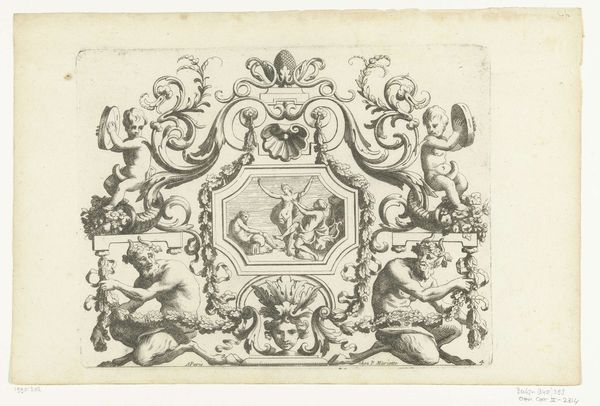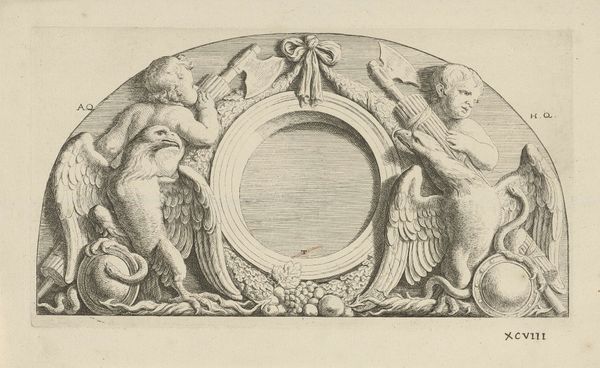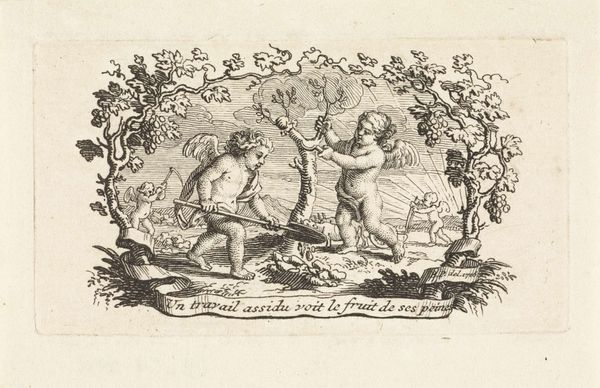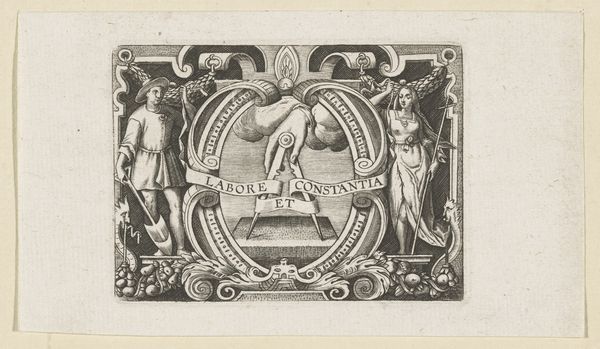
print, engraving
#
baroque
# print
#
old engraving style
#
form
#
limited contrast and shading
#
line
#
history-painting
#
engraving
Dimensions: height 82 mm, width 120 mm
Copyright: Rijks Museum: Open Domain
Wenceslaus Hollar made this rendering of the Stadswapen van Brussel, or coat of arms of Brussels, out of ink on paper in the mid-17th century. It is a print, meaning that it was made by incising lines into a metal plate, inking it, and pressing it onto paper. The proliferation of prints in the 17th century was a direct result of the rise of capitalism; they were relatively cheap to produce, and could be widely distributed. This was a radical departure from the traditions of manuscript illumination, where each image would have to be painstakingly drawn by hand, making them exclusive to the wealthy and powerful. Hollar was a master of his material, demonstrating incredible skill and precision as he brings together the lion rampant, flags, and a central image of St. Michael slaying a dragon. It's a tour-de-force of labor, but also a symbol of the way that mechanized processes were beginning to democratize image production.
Comments
No comments
Be the first to comment and join the conversation on the ultimate creative platform.
